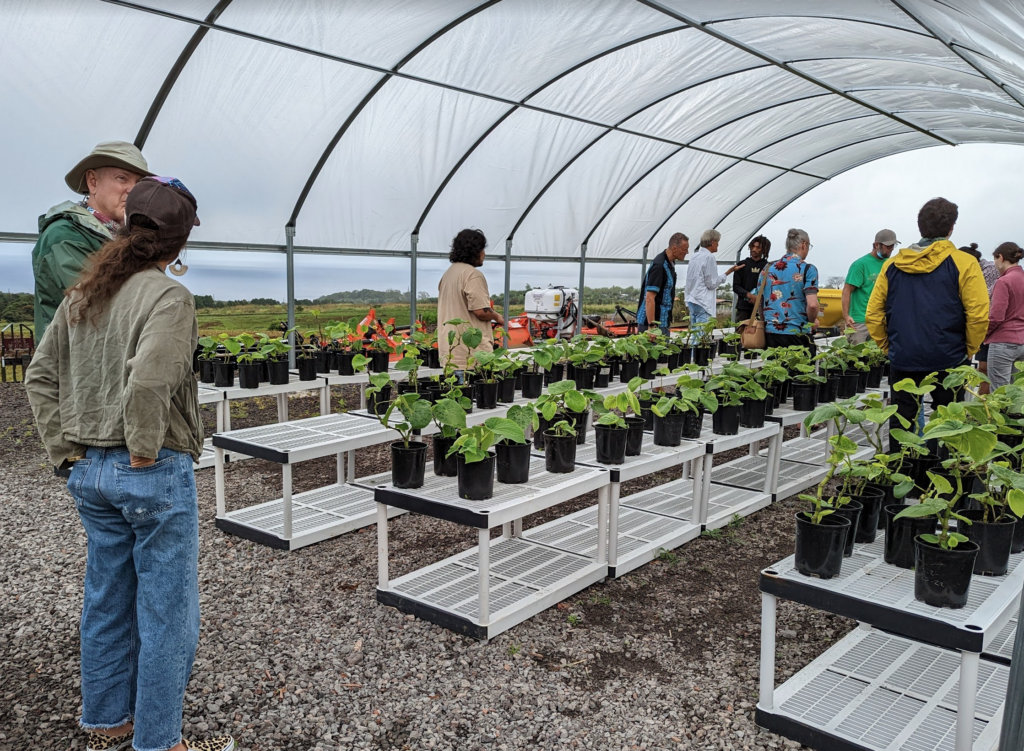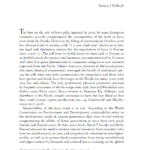
Summary of: Morphological, Phytochemical, and Genetic Variation in Hawaiian Cultivars of ’Awa (Kava). By Vincent Lebot et al. 1999.
Citation: Lebot, Vincent, Dennis J. McKenna, Ed Johnston, Qun Yi Zheng, and Doug McKern. 1999. “Morphological, Phytochemical, and Genetic Variation in Hawaiian Cultivars of ’Awa (Kava,Piper Methysticum, Piperaceae).” Economic Botany 53 (4): 407–18. https://doi.org/10.1007/bf02866720.
Fast Summary:
- The paper titled “Morphological, Phytochemical, and Genetic Variation in Hawaiian Cultivars of ‘Awa (Kava, Piper methysticum)” studies the variations in Hawaiian kava cultivars. The research utilized morphological descriptors, chemical analysis, and genetic fingerprinting to analyze the variations. Key findings include the influence of environmental factors on kavalactone content, the narrow genetic base in Hawai’i, and the identification of different morphotypes as likely somatic mutants from a common clonal source. The insights may impact kava’s cultivation, extraction, and commercial use.
Full Summary:
Introduction
The paper at hand delves into the intricate study of morphological, phytochemical, and genetic variations in Hawaiian cultivars of ‘Awa, also known as Kava or Piper methysticum. The primary objective of this research is to delineate the extent of variation existing between different Hawaiian cultivars of Piper methysticum. This is achieved by a comprehensive comparison of morphotypes and chemotypes to their respective genotypes. The study is significant as it sheds light on the underlying genetic and chemical structures that define the unique characteristics of these cultivars, which can have far-reaching implications for cultivation, extraction, and commercial utilization.
Methods
Morphological Description
The study employed a standardized list of seven morphological descriptors, along with an additional descriptor specifically for Hawai’i, to differentiate the various morphotypes. These descriptors were carefully chosen to represent the most distinctive features of the plants, allowing for a nuanced understanding of the physical variations among the cultivars.
Kava Chemical Analysis
The chemical analysis was conducted on 500-1000 gram samples of tissue collected from each accession. These samples were air-dried and then extracted with 95% alcohol. The extracted samples were subsequently analyzed by High-Performance Liquid Chromatography (HPLC), a powerful technique for separating and quantifying compounds. Six major kavalactones were detected and quantified in percentages, providing a detailed insight into the chemical composition of the cultivars.
Genetic Fingerprinting
The genetic fingerprinting process involved isolating total cellular DNA using a CTAB procedure. Genetic variation was then assessed using AFLP technology (Amplified Restriction Fragment Polymorphism), a method that amplifies specific DNA fragments. The amplification products were separated by electrophoresis and detected by labeled primers, allowing for a precise understanding of the genetic variations among the cultivars.
Results
The paper presents a thorough discussion of the morphological, phytochemical, and genetic variations in Hawaiian cultivars of ‘Awa. Some key findings include:
- A decrease in total kavalactone content when shade increases over the plants, indicating the influence of sunlight on chemical composition.
- An increase in total kavalactone content with factors such as fertility, irrigation, and cultivation in specific habitats.
- The independence of kavalactone content from the age of the plant, a surprising discovery that challenges previous assumptions.
- The observation that smaller roots tend to have higher kavalactone content, a finding that may influence cultivation practices.
- The discovery that peelings of the bark had a higher kavalactone content than the stump, representing a valuable by-product for the extraction industry.
- The revelation that the plant in Hawai’i has an extremely narrow genetic base, with morphological and phytochemical variation controlled by very few genes.
- The likelihood that most cultivars representing different morphotypes are somatic mutants from a common clonal source introduced by Polynesians during early settlements.
Conclusion
The study provides valuable insights into the morphological, phytochemical, and genetic variations in Hawaiian cultivars of ‘Awa. The findings contribute to a deeper understanding of kava’s characteristics and may have significant implications for its cultivation, extraction, and commercial utilization. The research opens new avenues for exploring the potential of this unique plant species and lays the groundwork for future studies aimed at optimizing its agricultural and industrial applications.




